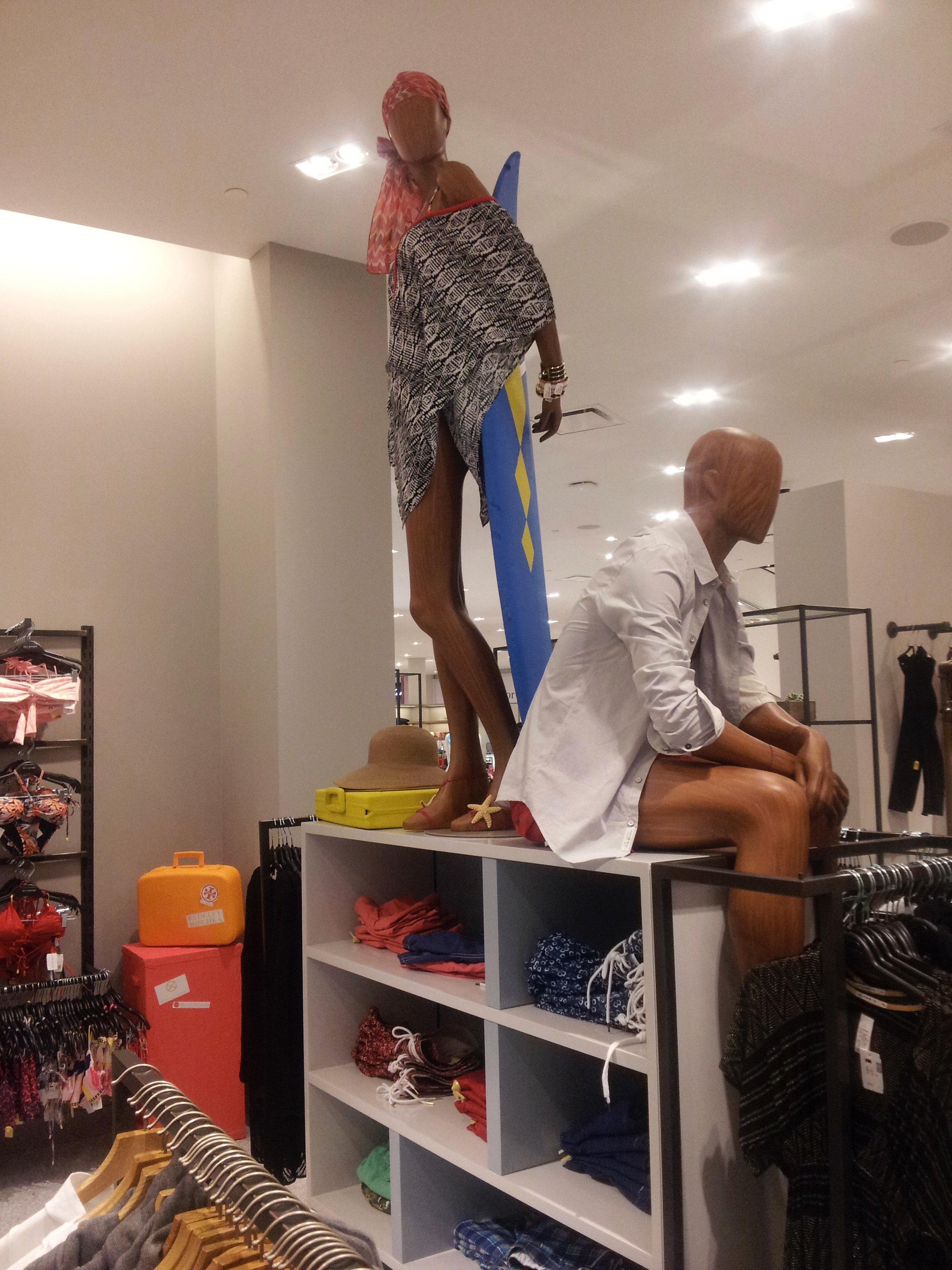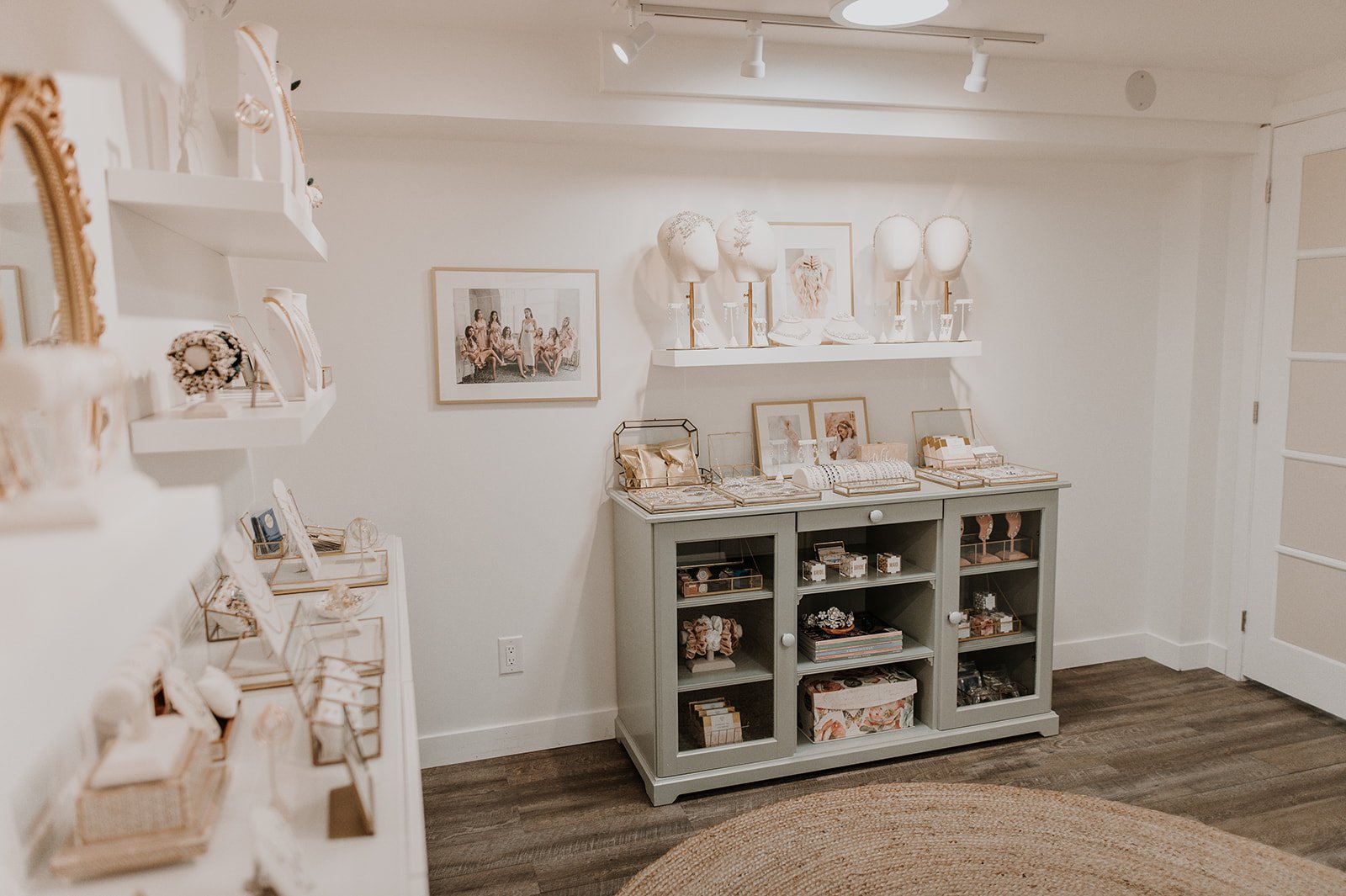Mini Shops + The VM Sales Pipeline
HOLT RENFREW SUMMER SET-UP BY ANI NERSESSIAN
Small space = Big potential.
Whether you run a boutique, market booth, vendor space, or a single zone inside a larger store, how your space performs is less about square footage — and more about strategy.
With the right visual merchandising approach, even the most compact setup can stop traffic, increase sales, and bring people back again and again.
Let’s walk through how to make the most of what you’ve got — starting with what we like to call your Mini Shop.
What Is a Mini Shop, Exactly?
A Mini Shop is any focused section of a retail space that needs to function on its own. Think of it like a shop-within-a-shop. Examples include:
A seasonal display zone in your store
A shelf or vendor space inside another retailer
A pop-up or trade show booth (e.g. retail space with approximately 10’x10’ footprint)
A market setup
The beauty of treating these spaces like their own “shop” is that you begin to design with clear goals in mind — instead of just “putting product out.”
Your Mini Shop’s Job: Attract, Convert, Upsell, Repeat
This four-phase approach works whether you’re running a flagship store or working with just a few feet of floor space.
Let’s break it down:
1. CAPTIVATE — Pull the Right People In
The goal here is to turn heads — especially those of people who weren’t already planning to stop in.
That means:
Using relevant, well-timed, brand-aligned displays
Adding visual “pulls” or styled product stories that are visible from a distance
Making the space feel fresh and alive (without overloading it)
Small-space tip: Try placing styled vignettes in sightlines or “non-access” areas — like behind checkout or at the back of your booth. These draw attention without sacrificing shoppable product space.
2. CONVERT — Help Them Shop With Confidence
Once they’ve stepped into the space, you want them to feel instantly comfortable — like they know exactly where to look, what goes together, and how to shop it.
Here’s where strategic grouping and clean zoning are key:
Tell a clear story with each section
Let your displays communicate how to shop — without needing a dozen signs
Remove visual confusion that causes hesitation
Small-space tip: A strong layout means you don’t need to over-label everything. Smart grouping often does the talking for you.
3. UPSELL — Guide, Don’t Push
Upselling isn’t about pressure — it’s about presentation.
When someone sees how a product fits into a larger context, or how one item pairs naturally with another, they’re more likely to add to their cart with excitement.
That could mean:
Pairing coordinating items together
Showing full outfit looks or product bundles
Curating rather than crowding
Small-space tip: Group items by collection, theme, or function, not just by product type. This “lifestyle-first” method turns browsers into buyers without ever needing to upsell out loud. See more about lifestyle vs. commodity merchandsing.
4. REPEAT — Give Them a Reason to Return
Keeping the space fresh is what turns first-timers into regulars.
You don’t always need a full revamp — even small tweaks between larger updates can do the job:
Weekly or monthly refreshes of featured items
Visual cues that something’s new (seasonal touches, subtle signage, new textures)
A few strategic swaps that help the space feel different without a big production
Small-space tip: Plan your tweaks around real-life timelines: seasonal shifts, product launches, local events. This keeps your visual merchandising cycle in sync with your customer’s mindset. See more about the Ongoing VM Cycle.
OLAEDA - PREVIOUS SHOP LOCATION. PHOTO BY LIL CRUSH PHOTOGRAPHY
The Takeaway: It’s Not About Size, It’s About Purpose
Small-space retail can be some of the most effective — when it’s done with purpose.
By looking at your layout through the lens of Captivate, Convert, Upsell, and Repeat, you start to create a space that sells on its own. The result? A polished, professional presence that works harder for you (even when you’re not on the floor).
This is the kind of shift that elevates your shop, builds loyalty, and boosts sales — all without needing more square footage.
Want to take it further?
There are tools and resources built specifically for small shops looking to optimize their visual merchandising strategy — from boutique layout tips to trade show booth planning.
Looking for store layout ideas that boost sales? Check out this VM Floorplan Guide
Setting up a 10x10 booth or market stall? The Booth Design & VM Plan Workshop walks you through how to make your space work harder
Need support with something more specific? That’s what visual merchandising consultants are here for.
🔍 Popular Topics from Retailers Like You:
How to make your store look professional
Visual merchandising portfolio samples
Merchandising strategy for small retailers
When to update window displays
Boutique merchandising tips that work
Visual merchandising for trade shows
How to optimize a small retail space
Your space doesn’t need to be big. It just needs to be strategic.


